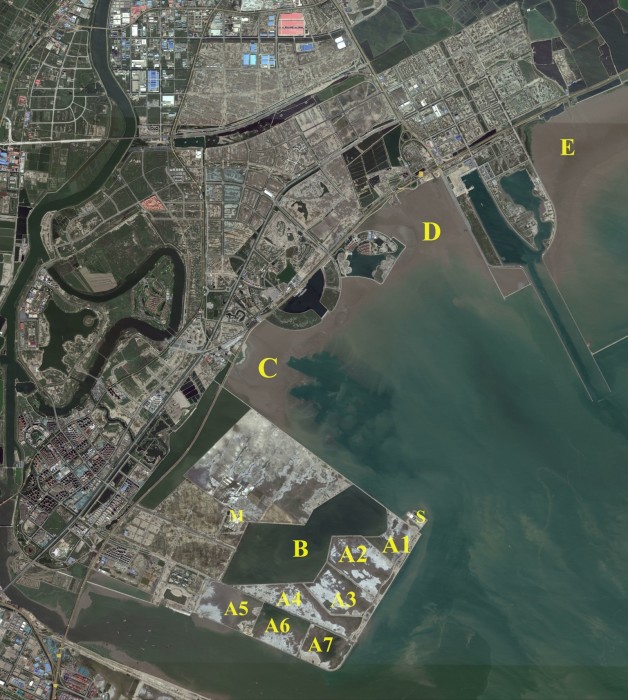By Chen Liwei

Three months after a series of explosions at a hazardous materials site in Tianjin, the city’s Binhai New District government is striving to rebuild its reputation and to show the citizens of Tianjin that the city’s ecosystems are thriving. On November 7, the city’s Binhai New District government organized a Bird Watching Festival at the Hangu and Beidagang wetlands, both important sites for migrating birds.
Attending the festival were local citizens, journalists, representatives of the Tianjin government and cultural management bureaus, as well as directors of the wetland nature reserves and representatives of local volunteer associations.

The government’s enthusiasm for preserving the birds’ habitat is encouraging, but the damage due to reclamation is extensive. We first visited Hangu wetland, just 6km away from the explosion site, which has been split into several small bays by reclamation projects. As a result, some sections are now unfit habitat for birds, destroyed by infrastructure and overgrowth of Spartina (a fast-growing invasive species of grass used to reclaim land). A recent Coastal Wetlands Blueprint Report published by the Paulson Institute and partners notes that reclamation for development is one of the biggest challenges facing the protection of China’s coastal wetlands. The purpose of the reclamation project at Hangu, which took place from 2004-2009, was to build a tourism spot. However, after a lonely museum, statue and small artificial lake were built, the area sees little activity these days.

Despite this development, the Binhai New District Party Secretary Zong Guoying recently visited the east end of the Hangu coastal wetland and reportedly was excited to see a huge flock of flying birds. (One section of the wetland still serves as wintering habitat for the relict gull and other migratory birds.) About 11,600 relict gulls, 97% of the world’s population, were counted in the Hangu wetland this autumn. Sadly, this is one of few sections of wetland that has been kept unreclaimed in Tianjin.
But the government seems committed to saving what is left. “It is not as important to construct a building for the city, as to conserve a piece of wetland here for birds,” Party Secretary Zong said following the visit in October. He has since suggested to develop a “Relict Gull Wetland Park” in the peninsula. He has also suggested “leaving more room for birds” at the Beidagang wetland, the second site we visited that day as part of the festival.

It isn’t just about the birds, of course. In a larger sense, the presence of birds provides an indication of the overall health of the ecosystem. Tianjin is working hard to show that despite recent events, the local government is committed to protecting its environment, including along the region’s valuable coastal wetland habitat.
Chen Liwei is Associate Director of Conservation Programs at Paulson Institute, where he leads implementation of wetland conservation projects.


